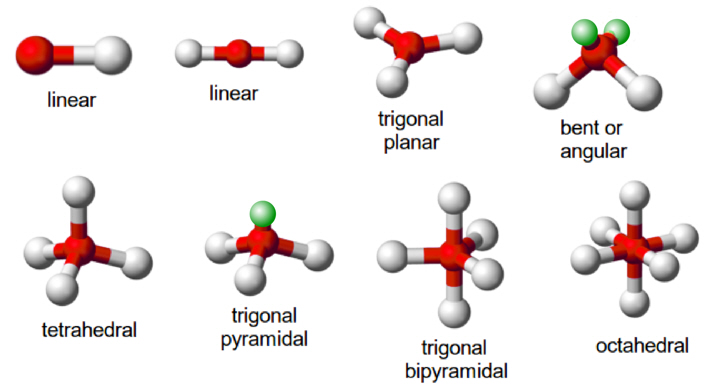Chemical Bonding and Shape of Molecules


↪ This type of covalent bond exists where the unequal sharing of electrons occurs due to the difference in the electronegativity of combining atoms.
↪ More electronegative atom will have a stronger pull for electrons.
↪ The electronegative difference between the atoms is greater than zero and less than 2.0.
↪ As a result, the shared pair of electrons will be closer to that atom.
Example, molecules forming hydrogen bonding as a result of an unbalanced electrostatic potential.
In this case, the hydrogen atom interacts with electronegative fluorine, hydrogen, or oxygen.
Nonpolar Covalent Bond
↪ This type of covalent bond is formed whenever there is an equal share of electrons between atoms.
↪ The electronegativity difference between two atoms is zero. It occurs wherever the combining atoms have similar electron affinity (diatomic elements).
Example, Nonpolar Covalent Bond is found in gas molecules like Hydrogen gas, Nitrogen gas, etc.
Coordinate covalent Bond
↪ The bond formed by the sharing of electrons between combining atoms, in which both the shared electrons are contributed by one of the bonded atoms only, is called co-ordinate bond or coordinate-covalent bond.
↪ Co-ordinate covalent bonds are usually formed in reactions that involve two non-metals such as a hydrogen atom or during bond formation between metals ions and ligands.
↪ In this type of bonding, the atom that shares an electron pair from itself is termed as the donor.
↪ The other atom which accepts these shared pair of electrons is known as a receptor or acceptor.
↪ The bond is represented with an arrow →, pointing towards acceptor from the donor atom.
↪ After sharing of electron pain each atom gets stability.
↪ This type of bonding is central to the Lewis theory.
↪ Getting a good understanding of co-ordinate covalent bonds can help in properly designing complex organic molecules.
↪ Below we have given a simple diagram of a co-ordinate bond.
↪ The bond is shown by an arrow which points in the direction where an atom is donating the lone pair to the atom that is receiving it.
Here are a few examples of the coordinate covalent bond.
↪ The nitrogen atom in Ammonia donates its electron pair to the empty orbital of H+ ion thus nitrogen is donor, H+ is acceptor and a co-ordinate bond is formed
↪ An oxygen atom in water donates its one pair of electrons to the vacant orbital of H+ ion thus a dative bond is formed oxygen atom is donor atom and H+ acceptor atom.